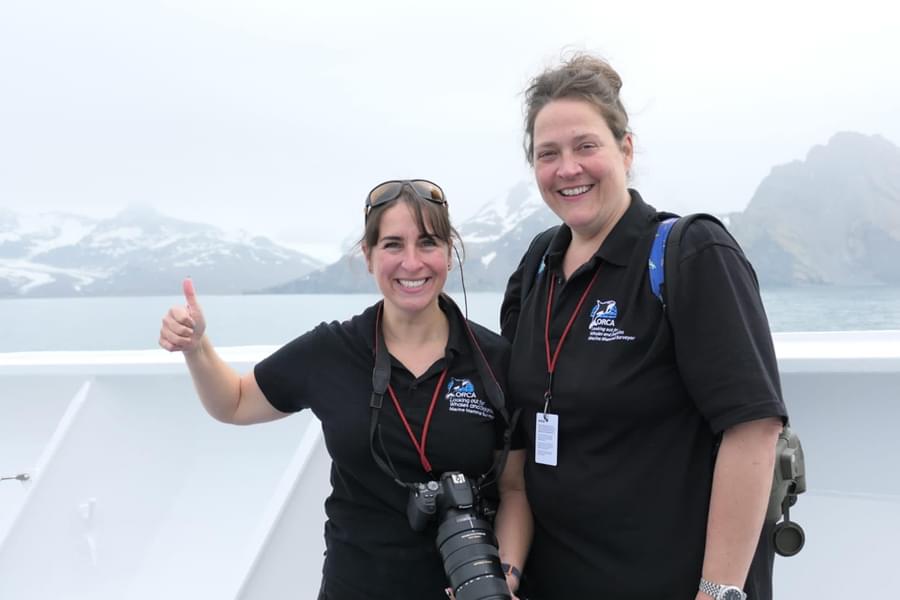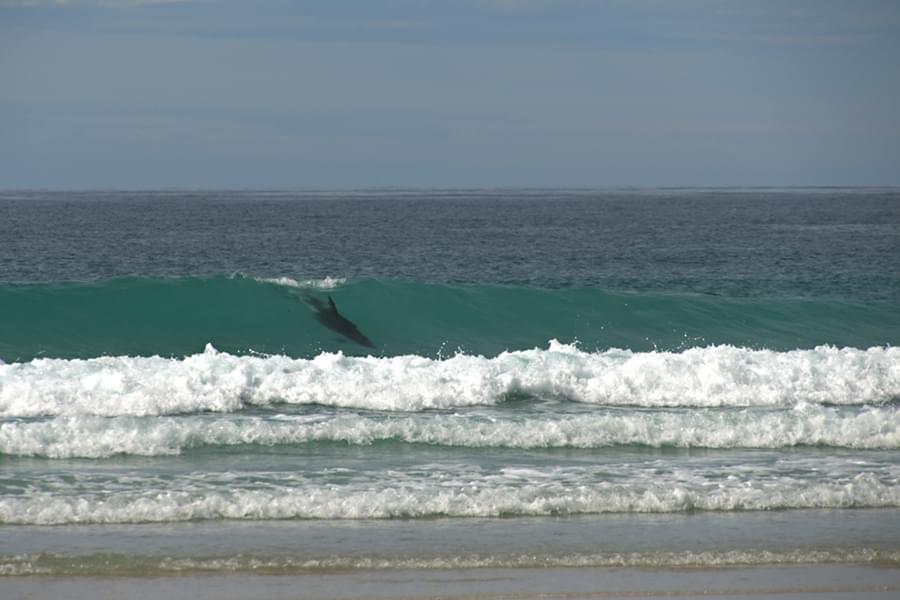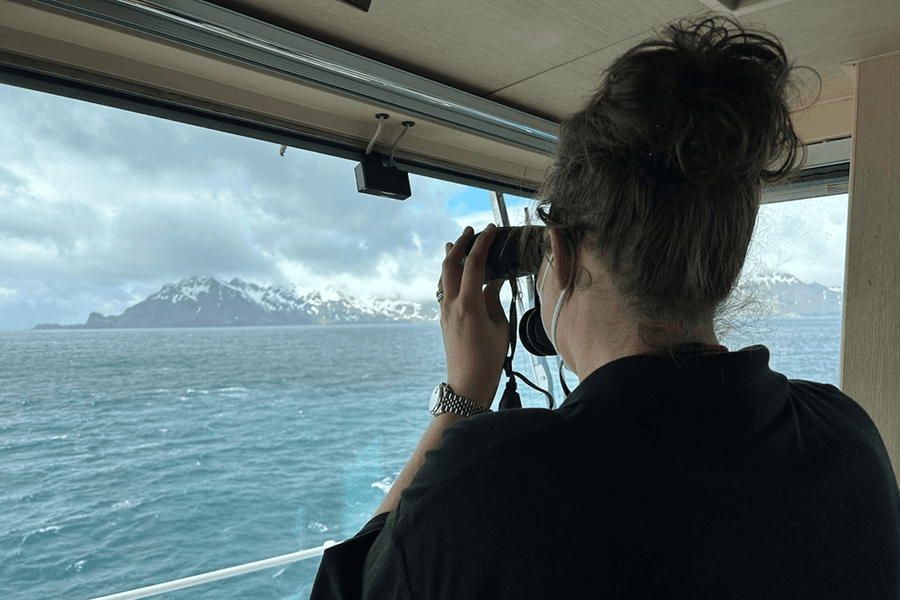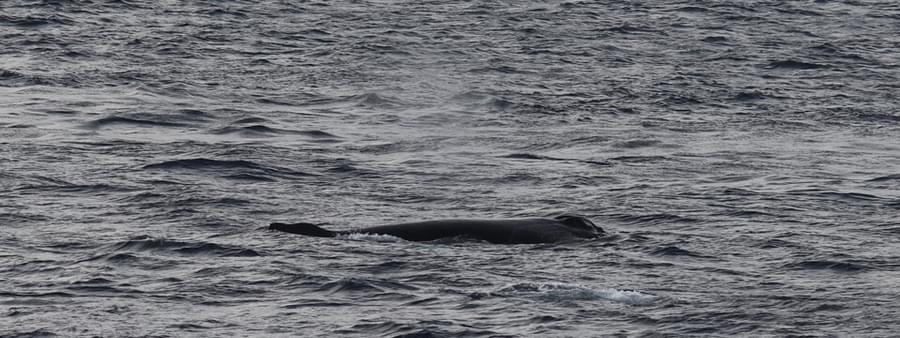This Antarctic season, ORCA is collaborating on an exciting project which will reveal more about the abundance and distribution of large whales around the island of South Georgia.
ORCA Marine Mammal Surveyor Emma Howe-Andrews joined Lucy Babey, ORCA’s Head of Science and Conservation, on board Hurtigruten's MS Fram to support the introduction of this exciting research project.

Being an ORCA Marine Mammal Surveyor and cetaceans are two of my biggest passions in life. They have brought me so much joy and happiness over the years, and are two things I can’t imagine being without.
For over 12 years now, I’ve been heading out to sea on ORCA surveys to collect distance-sampling data to help safeguard whales, dolphins and porpoises and by doing so, making a difference. I just love it! It’s had such a positive influence on my life and contributed towards my learning and development as an individual. I have also made some wonderful friends.
Recently, ORCA was asked to support the development and implementation of a bespoke research project, working in collaboration with Hurtigruten, the British Antarctic Survey and the Government of South Georgia. As a volunteer ORCA surveyor, I jumped at the chance to get involved in such an incredible project. It meant travelling to Punta Arenas in Chile to join Hurtigruten Expeditions ship, MS Fram, and undertake structured distance sampling surveys from the bridge in the waters around South Georgia and the Antarctic Peninsula. The ship would also visit the Falkland Islands as part of the itinerary.
Studies have indicated that some large baleen whale populations are recovering following commercial whaling, and this has led to larger aggregations in Antarctica, especially around South Georgia. The exact number and the areas of high densities, or hotspots, are not known, and with an increase in tourism and an increase in whales, ship strikes pose a real threat. The data from our surveys will be used to better understand the risk of ship strike, and help create guidance for policymakers, industry and researchers to safeguard important populations of cetaceans in these critical habitats. It will also feed into the wider projects being undertaken by the British Antarctic Survey and the Government of South Georgia.
Being asked to participate in the project was an opportunity of a lifetime, and it would allow me to make a further contribution and difference to these amazing animals that I love so dearly. To prepare for the trip, I undertook ORCA training courses, briefings and a mandatory online assessment that I had to pass to be certified to step onto the continent as a Guest Scientist by the International Association of Antarctica Tour Operators (IAATO).
Embarking on MS Fram for the next three weeks, I would be working alongside Lucy Babey to support and train the onboard expedition team. We would be showing the team how to undertake distance sampling surveys in critical research areas during the Antarctic season. ORCA Ocean Conservationist, Mathilde, was also on board and would be working alongside us on the bridge so that when Lucy and I disembarked, Mathilde and the expedition team could continue the data collation - citizen science in action.
We set sail, and it took two days to reach the Falkland Islands, encountering a diverse range of wildlife along the way, which included wandering albatrosses, giant petrels, Peale’s dolphins, dusky dolphins and on our approach to the capital Stanley, large aggregations of fin and sei whales near Berkeley Sound.

The islands were fascinating, and we visited nesting black-browed albatrosses, rockhopper penguin colonies and even observed gentoo and magellanic penguins splashing in the waves of the tropical-looking beaches of Carcass Island. Fantastic!
Leaving the Falkland Islands behind, we were South Georgia bound, and began our bridge surveys. Using the same distance sampling protocol as an ORCA ferry survey but with a focus on cetaceans only, effort data, environmental data and sightings data were collated. The effort data allowed for the transect length and amount of time surveying to be measured, weather conditions were recorded as environmental data, and when we had sightings, the GPS position, angle and distance were noted. The angle of the animal from the ship was obtained using an angle board, and the distance by using reticle binoculars. It really was very exciting!

The waters of South Georgia produced a steady number of whale sightings, mainly humpback whales that were using the area to feed, associate with other whales and as a stop-off point on their way to Antarctica. It was wonderful to see so many whales, in what is clearly an important area to them, and this reinforced the aim of the project to help protect these waters. South Georgia is one of the most beautiful places I have ever visited, with breath-taking snow-capped mountains, aqua-coloured waters and islands that hosted thousands of penguins, Antarctic fur seals and the huge southern elephant seals. There were moments where I had to pinch myself as I truly couldn’t believe what I was seeing as the scene was so surreal!

Arriving in Antarctica will be a moment that will live with me forever. Lucy, Mathilde and I had ventured out on deck to undertake a watch with the guests on board and were greeted by huge snowy mountains indenting the west coast of the peninsula, massive icebergs and blows of whales in the distance. It was spectacular, and despite watching so many documentaries over the years, seeing it up close and in person is indescribable. I stood on the deck feeling so thankful to be there, especially being part of a project that would help safeguard the whales visiting this magnificent place.
During the three weeks of surveys, we recorded nearly 400 animals, which included hourglass dolphins, a pair of very rare Arnoux’s beaked whales, orcas, and baleen whales such as southern right, Antarctic minke, fin, humpback and sei. The Southern Ocean supports a huge amount of biodiversity, and by using the data from this project, it will become even safer for the wonderful animals that inhabit it.
Being an ORCA volunteer Marine Mammal Surveyor has been life-changing, and I cannot imagine my life without it. I truly am so thankful for the experiences I have had, the people I have met and the wildlife I have seen. I would recommend it to anyone because you never know where it might take you and the difference you could make. Never did I think I would get to stand on the Antarctic continent! Great things can happen when people work together, and if I have made the slightest difference to the lives of cetaceans, then I have fulfilled my goal!
I would personally like to say thank you to the Captain and crew of the Hurtigruten MS Fram for their hospitality, and for being so welcoming, accommodating and supportive of this vital research.
This bespoke research project will be continued through the remainder of the 2022/2023 Antarctic season, with eight ORCA Marine Mammal Surveyors undertaking structured distance sampling surveys across four voyages to help us learn more about whale densities and distributions around South Georgia. Data will also be collected throughout the season by Hurtigruten Expedition Teams.
This project will give us an understanding of whale populations and abundance in South Georgia and the Antarctic Peninsula so that we can better safeguard these incredible animals for the future. MS Fram will be pivotal to the success of this project, and ORCA would like to take this opportunity to extend our gratitude to Hurtigruten Expeditions for allowing us to use it as our research vessel for this exciting project.

